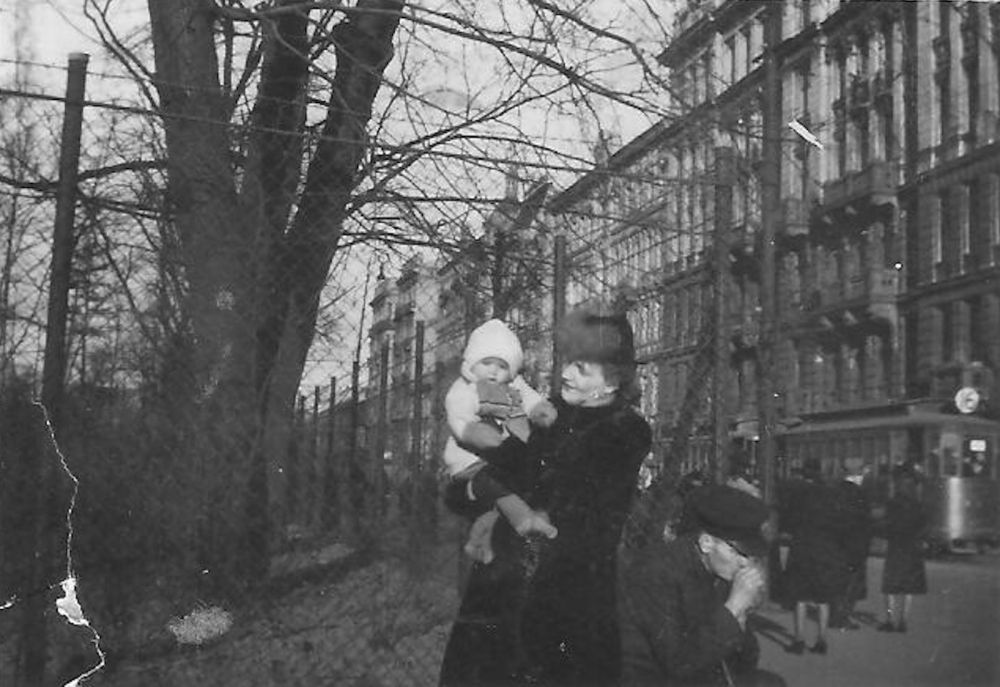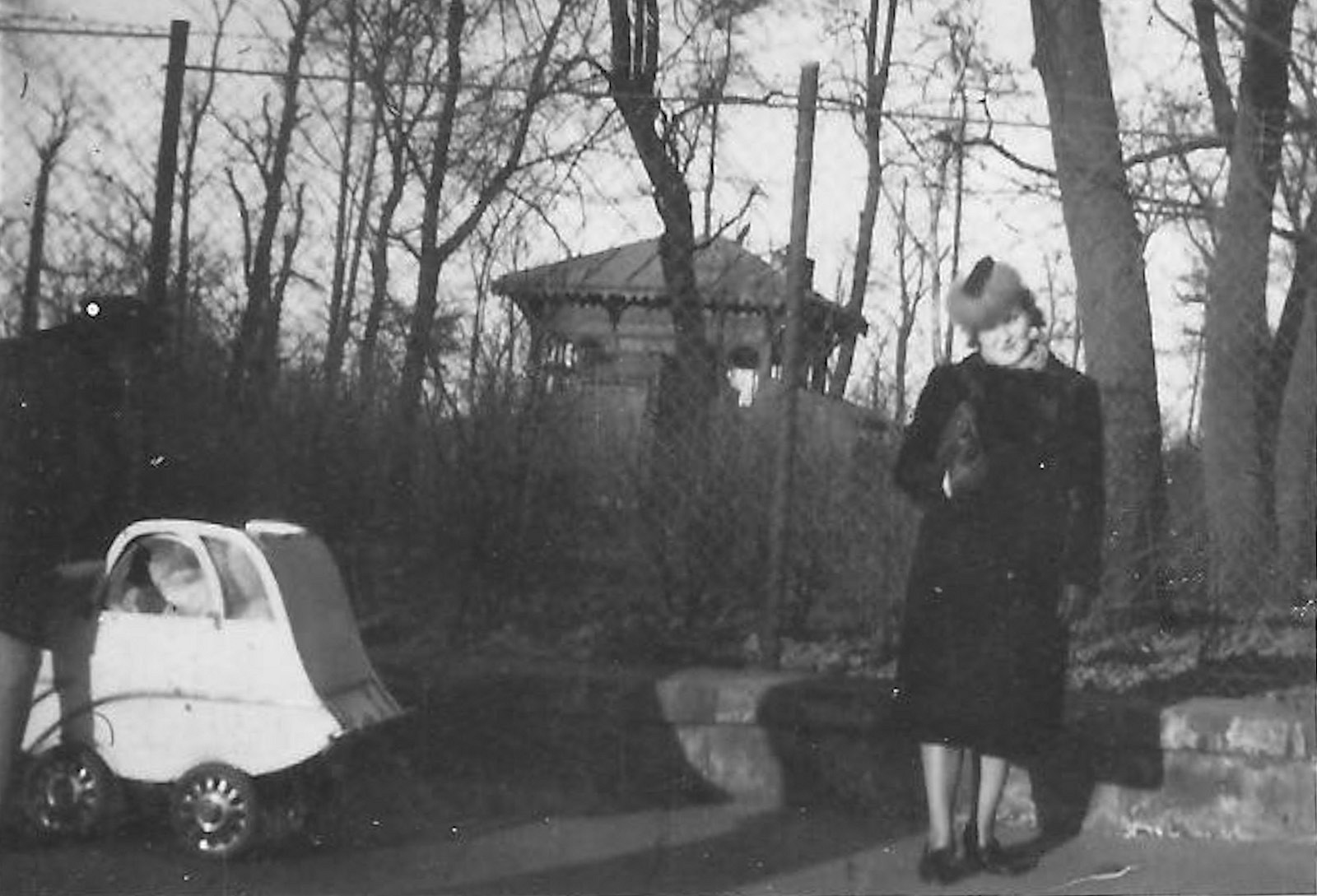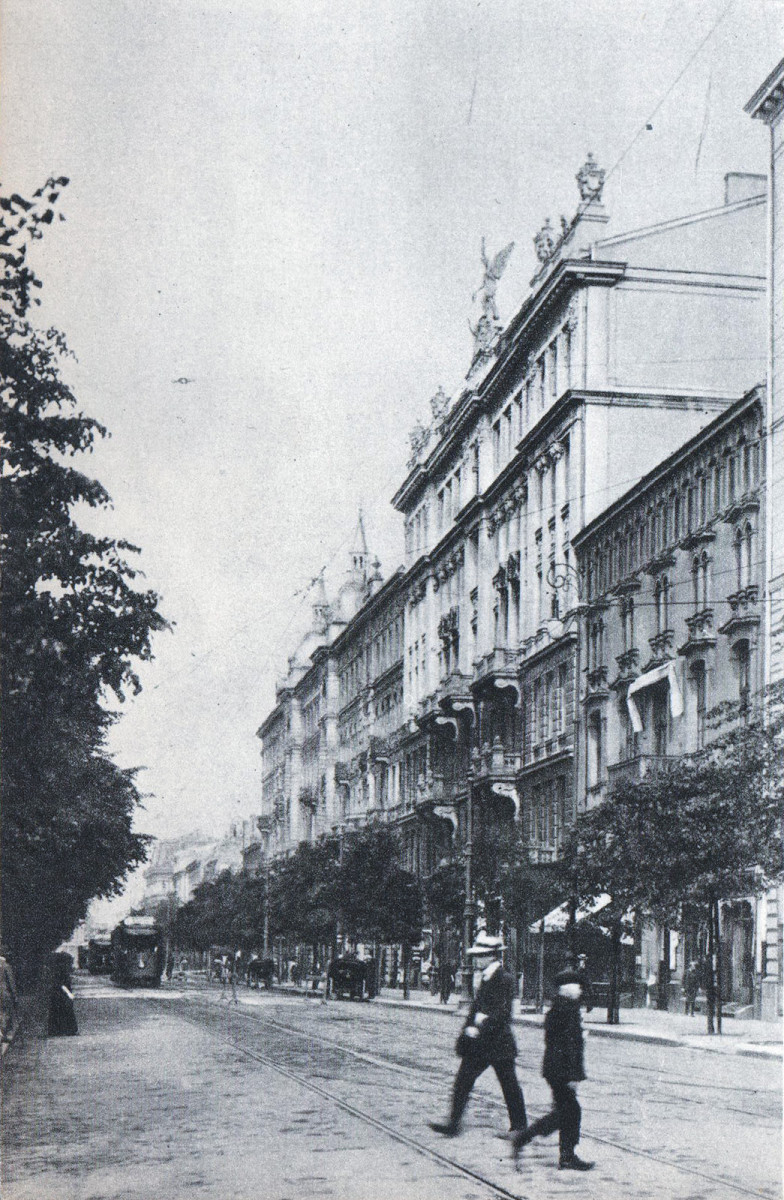- News
- Events
- Oneg Shabbat
- Collections
- Research
- Exhibitions
- Education
- Publishing Department
- Genealogy
- About the Institute
- Bookstore


Recently, Pnina Gutman came to the Documentation Department asking for help with identifying a photo taken in Warsaw during the Second World War. The photo depicts a little, nearly two-year-old girl held in the arms by a woman. They are against a background of one of the streets of Warsaw: on one side there is a row of tenement houses, whereas on the other — a park or square with trees. Further away we can see a tram no. 16. The photo was taken in 1943.
Pnina Gutman already contacted Jan Jagielski, head of the Documentation Department, years ago in order to precisely pinpoint her photo. At that time, Jagielski suggested that the photo might have been taken in Chłodna Street, towards Żelazna Street. The tram no. 16 was to be a confirmation of it as it had run through Chłodna Street during the German occupation. However, Pnina Gutman decided to come to the JHI because there was conjecture that the photo had been taken in a different place, possibly in Królewska Street.

The girl in the photo is Barbara Wenglinska, today Pnina Gutman. The woman is Charlotte Rebhun, her nanny at the time. The girl was born in the Warsaw Ghetto in 1942. At the end of 1942 or the beginning of 1943 she was smuggled to the Aryan side, where Charlotte Rebuhn, who was Christian, took care of her. Her husband was a German Jew, who died in Treblinka. Charlotte was hiding also eight other Jews. Barbara lived with her foster family in a flat at 33 Krochmalna Street till the outbreak of the Warsaw Ghetto Uprising. The name Barbara was probably real, the surname Wenglinska was fake.
Due to insurgent activities Barbara was separated from her foster parents. Charlotte with her daughter ended up in a labour camp near Częstochowa, her son was sent to Mauthausen and Barbara was found in an empty railway carriage in Milanówek near Warsaw. Then, the girl ended up with a Polish family by the name of Kaczmarek from Sieraków. Till March 1948 Barbara lived with Mr and Mrs Kaczmarek and their five children in Żyrardów.
Mr and Mrs Kaczmarek wanted to adopt Barbara, but the girl was placed in an orphanage for Jewish children in Otwock near Warsaw. In October 1948 Barbara was adopted by a Jewish family by the name of Himel and with them she left for Israel.
Till 1996, Pnina did not know much about her past. Only then did she start to discover her story. It was possible, inter alia, thanks to the help and engagement of Yale Reisner from the Genealogy Department of the Jewish Historical Institute as he got in touch with the Kaczmarek family. After many years, Pnina found the Kaczmarek family and met with them in Poland and with Charlotte’s children in Germany. Both families received the medal of the Righteous Among the Nations for saving the Jewish girl. However, Pnina still does not know the names of her biological parents.
Pnina Gutman is still looking for some information which can bring her closer to finding out identities of her parents. Even tiniest pieces of information can be valuable. At the request of Ms. Gutman, Jan Jagielski decided to identify her photo again. After verification of photos of Chłodna and Królewska streets from the collections of the JHI as well as other sources, Mr Jagielski established that the photo depicting little Barbara with Charlotte had been taken in Królewska St. Crucial was a photo from 1910 from a book „Warszawa na dawnej fotografii” [Warsaw in an old photograph], published in 1960, where we can see buildings in Królewska Street which are the same as those visible in the photo from 1943. Also, the tram no. 16 confirms the location as from the end of 1941 this tram ran also through Królewska Street.
Experts from many countries are working on the life story of Pnina Gutman and she herself is not giving up.

(The life story of Pnina Gutman was described on the basis of articles from the foreign press in English and Hebrew sent by her to the Documentation Department of the JHI.)